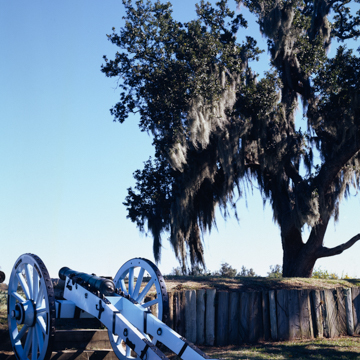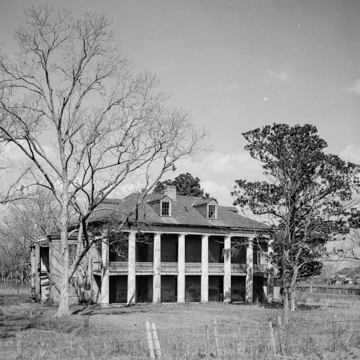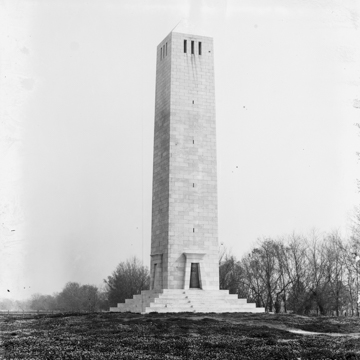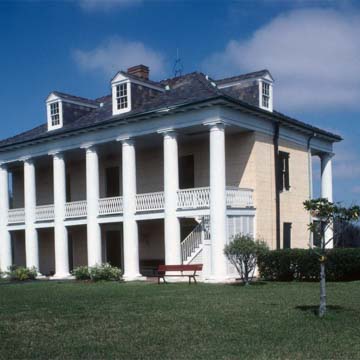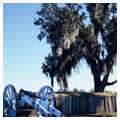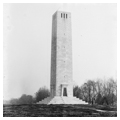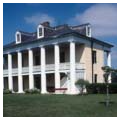Chalmette Battlefield and Cemetery are named for Ignace de Lino de Chalmet, whose late-eighteenth-century plantation land they now occupy. The Battle of New Orleans, which took place here on January 8, 1815, sixteen days after the signing of the Treaty of Ghent on December 24, 1814, was the last engagement of the War of 1812. Under the command of Major General Andrew Jackson, American forces defeated British troops led by Major General Sir Edward Pakenham in a battle that took place on a strip of land approximately one-half mile wide and that lasted less than two hours. British casualties exceeded 2,000, and Pakenham was among those killed; the Americans reported only 71 mortalities. The British retreat to Lake Borgne on January 18, 1815, marked the end of the Louisiana campaign and preserved America’s claim to the territory acquired from France in the Louisiana Purchase. A section of the American earth-works has been restored, and battery positions are identified by artillery displays. Visitors can take a 1.5-mile tour by automobile or on foot that links important sites on the battlefield. A visitor center provides additional information.
Marking the site of Jackson’s position during the battle on January 8, 1815, is a 102-foot-high obelisk designed by Newton Richards. Originally planned to be 200 feet high and modeled after the Washington Monument in the nation’s capital, the obelisk is of Tuckahoe and Georgia marble on a marble-faced brick foundation. Its cornerstone was laid in January 1840 a few days after Andrew Jackson visited the field on the twenty-fifth anniversary of the battle. Construction began in 1855 but was halted at the outbreak of the Civil War, when the obelisk was only 55 feet high. It was completed as a shortened version of the original design in 1908 by the U.S. War Department one year after the federal government acquired the monument from the State of Louisiana. The obelisk sits on a stepped podium and has neo-Egyptian entrance porticoes on all four sides; three of them are blind, and one opens to the shaft’s interior, where an iron spiral staircase surrounds a brick central support.
Also on the battlefield site is the Malus-Beauregard House. This two-story house of stucco-covered brick, never part of a plantation, was built for Madeleine Pannetier Malus between 1832 and 1834; she died in 1835. The house was purchased from her family in 1856 by Caroline Fabre Cantrelle, who replaced the wooden columns of the galleries with full-height Doric columns of stuccoed brick at front and rear. The house has a hipped roof with six dormers, with three rooms on each floor, and its principal entrance was from the river side. The Greek Revival moldings were probably added in the 1850s. The house later served as a country residence for a succession of owners, one of whom was Judge René Beauregard, son of Confederate General P. G. T. Beauregard, who purchased it in 1880. The National Park Service acquired the house in 1949 and it was restored in the late 1950s by architect Samuel Wilson Jr. Changes were made to the interior to accommodate exhibits on the Battle of New Orleans.
Occupying a long, narrow site next to Chalmette Battlefield is the cemetery established in 1864 for Union soldiers who died in Louisiana during the Civil War. It also contains the graves of veterans of the Spanish-American War, World Wars I and II, the Vietnam War, and four Americans who fought in the War of 1812. Many of the 15,000 graves are unidentified, and all are marked by small plain headstones that vary in design according to the era they were placed here. Th cemetery is surrounded by a brick wall, completed in 1873.






